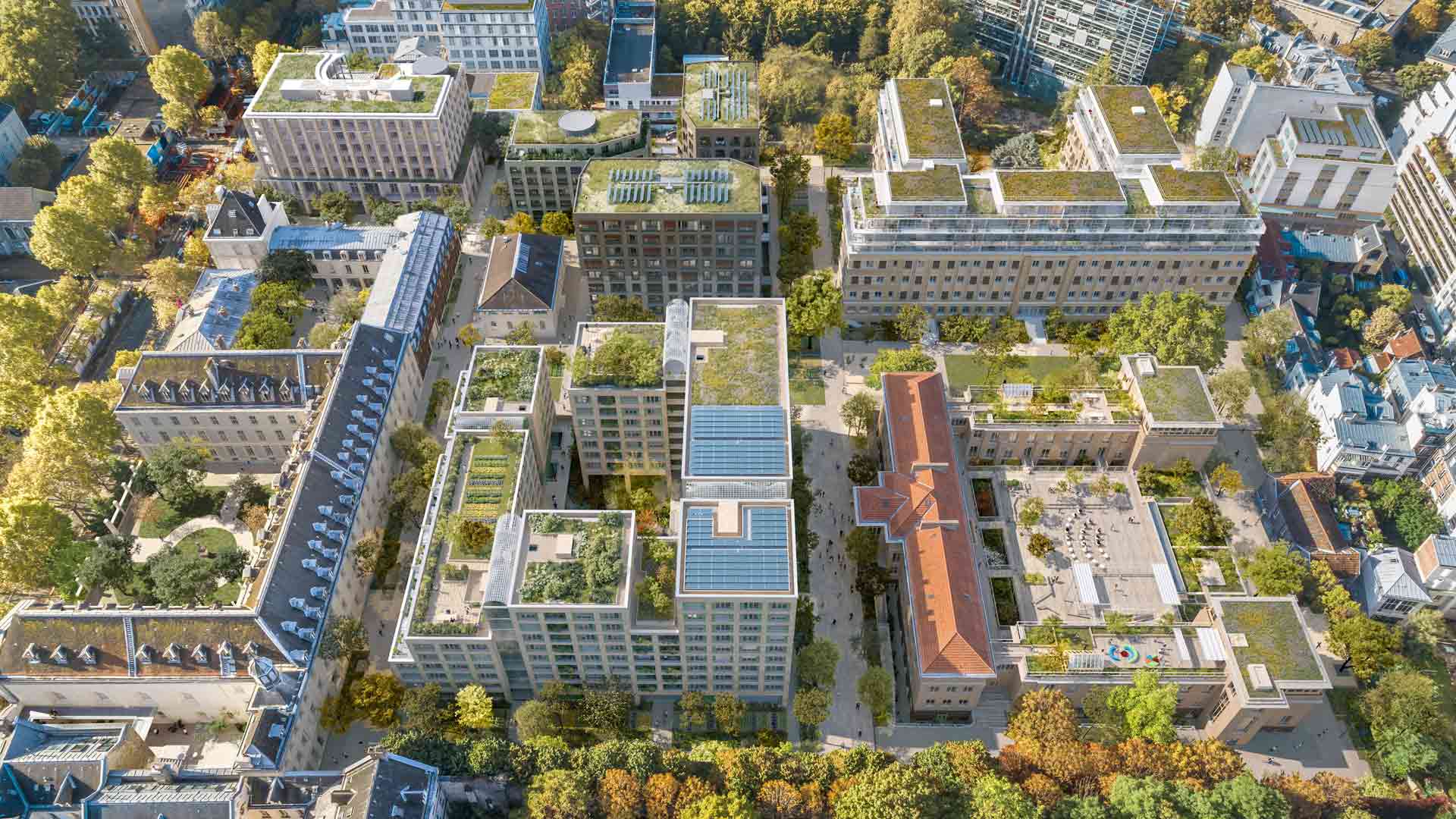
An inclusive eco-district, a laboratory for innovation, in the heritage grounds of the former Saint-Vincent-de-Paul hospital.
Opening up and bringing to life a historical heritage
The project designed by the Anyoji-Beltrando agency preserves the historic surrounding walls and creates a dialogue between a heritage building, 60% of which has been preserved, as well as the characteristic English courtyards, and four contemporary urban blocks. All are part of a landscape framework organized around a central crossroads, a 4784 sq.yard green space con-nected to a quiet ring road.
A story about solidarity and public resources
Resurrecting the site's centuries-old vocation as a hospital, the building was temporarily dedi-cated to emergency accommodation, then to the Grands Voisins collective, which turned it into a place for meeting, living and working, a “factory of common resources”. This experience in-spired the “final” program for the operation. In particular, the premises used for activities will provide a springboard for companies in the social and solidarity economy.
A mixed and inclusive program that optimizes the use of space
The future district will include 600 housing units (50% of which will be social housing, with an emergency accommodation center and a childcare center), facilities, shops and economic ac-tivities, mainly in the social and solidarity economy, crafts and design.
These activities will take place in the areas overlooking the courtyards. The former maternity hospital will house a day nursery, a school, a school kitchen and a gymnasium, with shared facilities.
Zero carbon, zero emissions, zero waste
The project aims to minimize the carbon footprint and develop the circular economy throughout the district's life cycle. The 'zero carbon, zero waste, zero discharge' objective is reflected in a sober urban planning approach that combines the reinvestment of buildings, the reuse of mate-rials, the re-fertilization of soil, the control of energy consumption and the use of renewable energy.
An innovation laboratory
The Saint-Vincent-de-Paul joint development zone is the basis for multiple innovations such as the selective collection of urine with a view to transforming it into natural fertilizer, heating and domestic hot water from the City of Paris' non-potable water network, the reuse system for both reconstruction and new construction, the participation of future residents in the design of housing, the opening of the school premises and courtyard to the public outside school hours, the creation of a long-term district manager position, and more.
Launched in 2018, the operation covers 3.4 ha and 71,759 sq. yards of land is currently undergo-ing its first major renovations.
Visuals :
General perspective of the Saint-Vincent-de-Paul project © Anyoji Beltrando - Sergio Grazia
Perspective of the future central intersection © P&MA - Anyoji Beltrando - Images My Lucky Pixel

